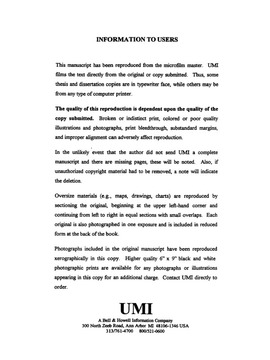| dc.contributor.author | Bjornen, Kay Kuhlemeier. | en_US |
| dc.date.accessioned | 2013-08-16T12:30:27Z | |
| dc.date.available | 2013-08-16T12:30:27Z | |
| dc.date.issued | 1999 | en_US |
| dc.identifier.uri | https://hdl.handle.net/11244/5770 | |
| dc.description.abstract | Ligand-modified micellar-enhanced ultrafiltration (LM-MEUF) is a membrane based separation method for removal of metal ions from aqueous solutions. An amphilic ligand which will selectively complex the target ion is solubilized in surfactant micelles and added to the waste stream. Semi-equilibrium dialysis (SED), ultrafiltration (UF) and spectrophotometric titration methods have been used to investigate the properties and effectiveness of a commercially available ligand, Kelex 100, for removal of toxic metals ions with LM-MEUF using several different surfactant solutions. The use of alkylated thiourea ligands for removal of mercury was also studied. | en_US |
| dc.description.abstract | Kelex 100 was purified and the active ingredient, 7-(4-Ethyl-1-methyloctyl)-8-hydroxyquinoline, was isolated. Protonation equilibria in cationic (CPNO3), anionic (SDS) and nonionic (C12(EO)6) surfactant solutions, as well as 80% (w/w) methanol-water solution, were studied. The protonation constants were found to be shifted in a predictable manner consistent with solvent polarity and micellar charge. Metal-ligand stoichiometry in cationic (CPNO3) and neutral (DDAO, CO660 and/or C12(EO) 6) were determined for Kelex 100 with cadmium and mercury. Ligand to metal stoichiometry was 2:1 in all cases for mercury. Cadmium was 2:1 in neutral surfactant but 3:1 at high ligand to metal ratio in cationic surfactant. | en_US |
| dc.description.abstract | Ultrafiltration experiments were conducted to further investigate separation of cadmium and to determine whether lowering pH would be effective for breaking the ligand-metal complex. By stripping the complex, the unbound metal can be separated and the ligand regenerated and reused. UF results confirmed greater than 99% rejection in both surfactant solutions at pH 9.0. However, stripping was not as effective for UF as it was for SED. Experiments at pH 6.0 showed significant rejection of cadmium in UF studies while SED experiments showed almost zero rejection in C12(EO)6 and expulsion of cadmium into the permeate with CPNO3 solution. | en_US |
| dc.description.abstract | Kelex 100 is an effective ligand for targeting cadmium with LM-MEUF. SED experiments at pH 9.0 in either neutral (C12(EO)6) or cationic (CPNO3) surfactant showed >99% rejection of cadmium. The effects of varying ligand to metal ratio and pH were examined in both CPNO3 and C12(EO)6 solutions as well as the effects of added electrolyte, a weakly competing ion (Ca2+) and a strongly competing ion (Zn2+) in C12(EO) 6 solution. | en_US |
| dc.format.extent | xviii, 207 leaves : | en_US |
| dc.subject | Ultrafiltration. | en_US |
| dc.subject | Ligands. | en_US |
| dc.subject | Chemistry, Analytical. | en_US |
| dc.subject | Micelles. | en_US |
| dc.subject | Engineering, Chemical. | en_US |
| dc.subject | Extraction (Chemistry) | en_US |
| dc.title | A study of the use of Kelex 100 for removal of cadmium using ligand-modified micellar-enhanced ultrafiltration. | en_US |
| dc.type | Thesis | en_US |
| dc.thesis.degree | Ph.D. | en_US |
| dc.thesis.degreeDiscipline | Department of Chemistry and Biochemistry | en_US |
| dc.note | Source: Dissertation Abstracts International, Volume: 60-01, Section: B, page: 0157. | en_US |
| ou.identifier | (UMI)AAI9918757 | en_US |
| ou.group | College of Arts and Sciences::Department of Chemistry and Biochemistry | |
